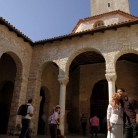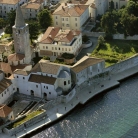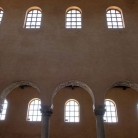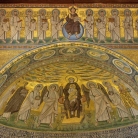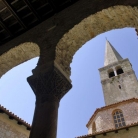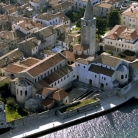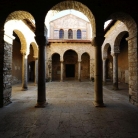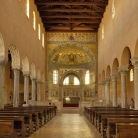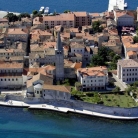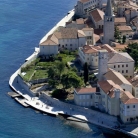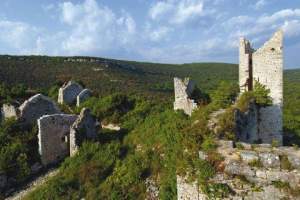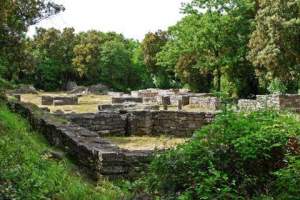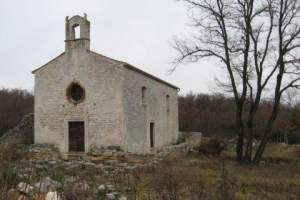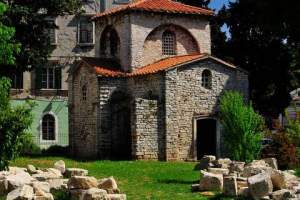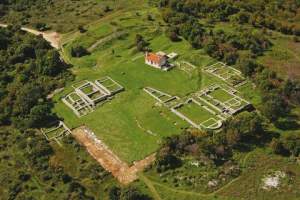Euphrasian Basilica
Euphrasian Basilica is one of the best preserved Early Christian complexes. As one of the most significant world historical monuments it was put on the UNESCO World Cultural Heritage List in 1997. Its current appearance dates back to the 6th century, although its first Early Christian basilica was erected in the 4th century.
In view of all church buildings being erected on a densely built area, remains of profane Roman architecture, most probably used for economic purposes, were found. These can be seen in the area of today's antechamber or the narthex, once the Roman road, and underneath the floors of the oldest church.
The first church consisted of three parallel halls, the biggest of which is the central one used as the basilica with the status of the cathedral. A southern hall is somewhat more narrow, while the southernmost one is divided into two parts, one of which is the baptistery. In the 5th century, twin basilicas were built. The southern bigger Pre-Euphrasian basilica is located right below the current Euphrasian Basilica, while only parts of the wall and the colonnade foundation remained from the northern one. The octagonal baptistery, which was being used during later periods, was also a part of the complex.
Bishop Euphrasius, after whom the Basilica was named, modernized it by adding a polygonal apse to the basilica central nave and inscribed semi-circular apses to the lateral one. During its renovation, church furnishings were completely changed, a marble colonnade with capitals which arches were embossed was set up. Its biggest treasure are magnificent mosaics on the apse headpiece. Its central part shows the Mother of God Enthroned with Christ, surrounded by archangels with St. Mauro, the protector of Poreč and Bishop Euphrasius. The inner side of the triumphal arch shows saint women and Christ as the Lamb of God, while above it there is Christ Pantocrator and 12 apostles. Mosaic displays of saints are also located on the vault between the windows, while the mosaics with geometrical shapes are below it.
The ciborium inserted in 1277 is also decorated with mosaics and fits perfectly in the basilica appearance. The interior shows the night sky, while the front side of the ciborium shows the Annunciation. The Cathedral complex also includes the atrium with the baptistery, the Bishop Palace, the lapidarium, the Church Art Museum, and the archaeological part of the first church and Pre-Euphrasiana.












